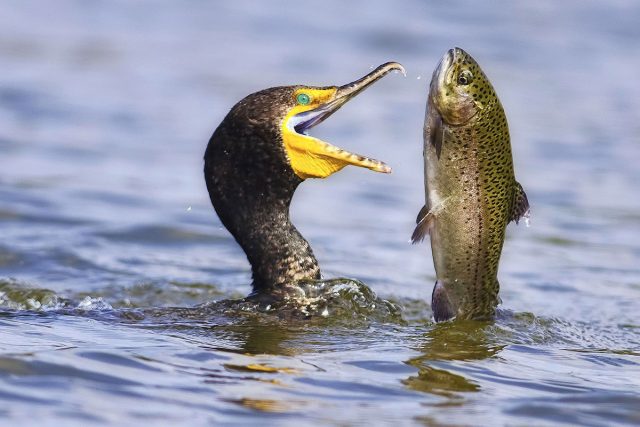MI weekly selection #231

Mature parasite living in fish eyeball helps host become easy prey for birds
The parasite Diplostomum pseudospathaceum grows inside fish eyeballs and, depending on its age, either protects its host or compels the fish to become easy prey to birds. When the parasite is young, it wants its fish host to stay alive so it can mature, but when it’s old enough to mate, it needs to move into a different host, a bird, to complete its life cycle, so it does what it can to get its fish host eaten.
New camera system spies deep-sea larvaceans and their carbon-capturing mucus
A special deepwater laser camera system has captured giant larvaceans as they filter-feed through their disposable mucus enclosures. The observations clarify the larvaceans’ role in carbon cycling.
NASA developing versatile, chain-mail-like fabric for space applications
NASA is developing a 3D-printed fabric that puts a new spin on ancient chain mail for use in future spacecraft and spacesuits. The versatile fabric is made of metallic tiles that can either reflect or absorb light depending on the side exposed and can be used in many shapes without giving up any of its strength.
Scientists link meteorites to volcanic activity
Geochemists say ancient meteorites that struck the Earth led to volcanic eruptions. The scientists, who studied rocks in a Sudbury, Ontario, crater formed by a meteor 1.85 billion years ago, say volcanic fragments from the impact changed over time and mixed with underground magma.
Scientists re-create ancient rubisco to learn more about early Earth
Researchers are re-creating an ancient form of the enzyme rubisco, which has been around about 3 billion years since the beginning of photosynthesis, to learn more about Earth during the Great Oxygenation Event. The ancient version of rubisco is being inserted into cyanobacteria using CRISPR technology in the hope of creating a rubisco molecule that hasn’t been seen in billions of years.